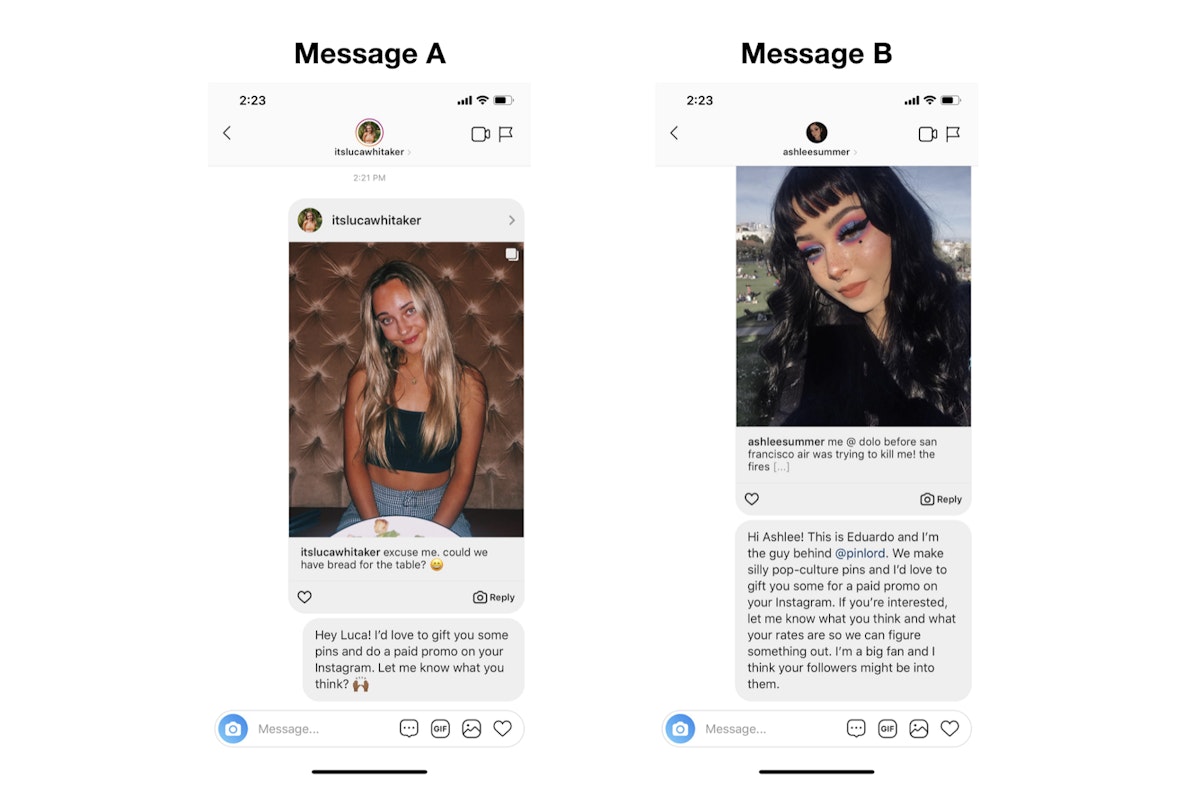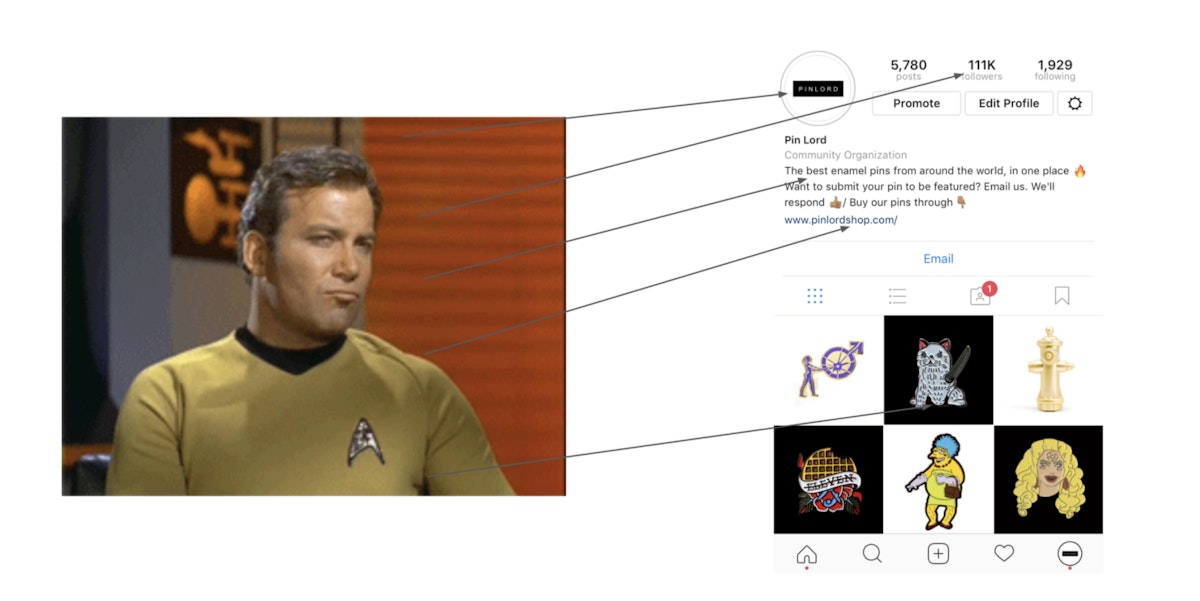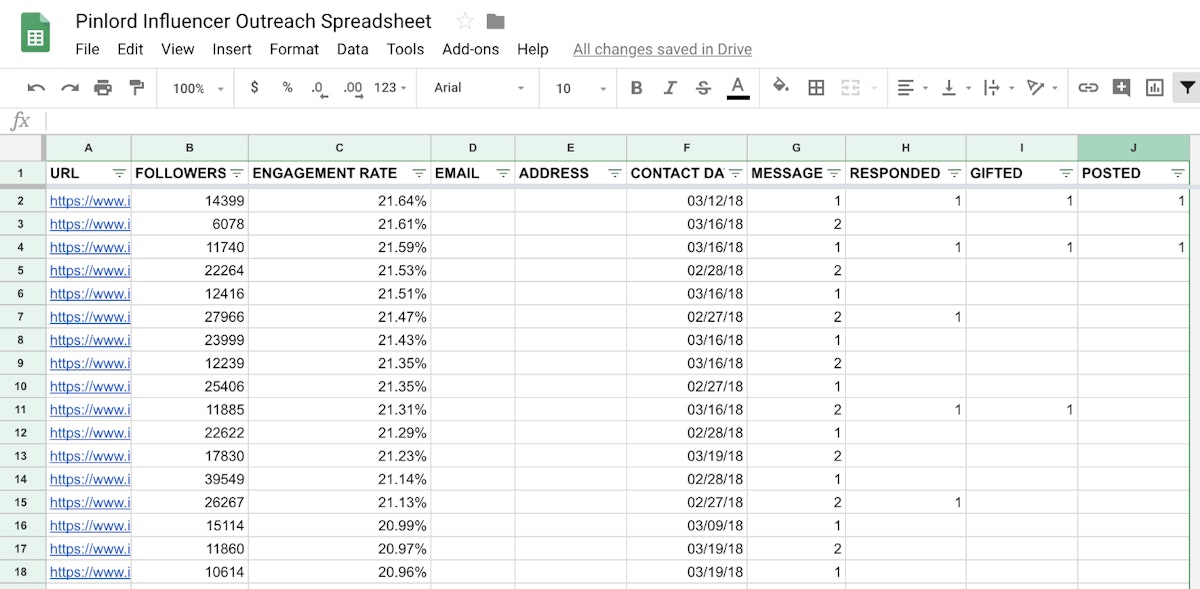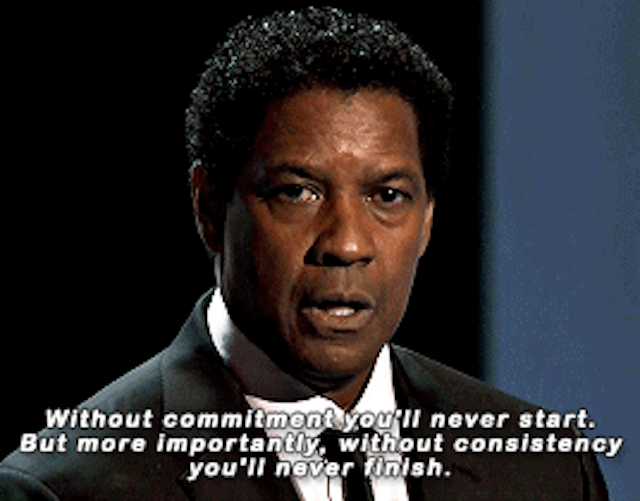I’ve managed hundreds of influencer marketing campaigns for brands like Depop, Fora Foods, and my own project @pinlord and if there’s one thing I’ve learned, it’s that influencer marketing outreach is very different than “traditional” outreach.
These days, most influencers A) don’t use email as their main work platform, B) get a lot (hundreds) of potential partnerships opportunities every day/week, C) mostly evaluate your brand based on your Instagram, and D) have very different needs and priorities vs. traditional businesses.
So, if you want to maximize the number of content creators who say “yes!” to your next campaign, it’s essential that you re-evaluate your outreach strategy to best fit the current influencer landscape.
From experience, there are four essential steps in the outreach process that will greatly increase your likelihood of success. They are:
1. Find the influencers with the highest potential value for your project.
This is the most important step in the influencer marketing process! If you don’t first identify the content creators with the highest potential value for your campaign, it won't matter how great your response rates are, you are guaranteed to see underwhelming results because the influencers you're working with didn’t have much value, to begin with. I’ve written an in-depth article about this topic, but generally, you can measure the potential value of an influencer by measuring their organic engagement rate.

Measure engagement by dividing an influencer’s average number of likes in post 4–10 by their total number of followers, and multiplying that by 100. You want to measure posts 4–10 because that will be the most accurate representation of the current engagement rate. Measuring post 1–3 won’t be correct because those posts are still getting likes on explorer pages. Measuring after post 10 won’t be very effective because that will be historic engagement and that isn’t as great of a predictor of value in comparison to current engagement.
The higher it is in comparison to similar content creators with a similar follower range, the higher the potential value. In terms of numbers, influencers with over 10K followers and an organic like engagement rate of 15% or more are the most likely to give you the best results.
2. AB Test Your Messaging.
Once you‘ve identified a good number of high-value influencers for your campaign (I’d say aim to find at least 35 influencers before you start outreach), it’s time to craft your outreach message. Instead of using your standard “business pitch,” I’d recommend that you create a couple of new messages in order to test which one gets the highest response rates for your influencer marketing, specifically.
This doesn’t have to be complicated. I tend to test one super simple message and one more traditional “business-y” type of message. Why? From experience, I’ve noticed that content creators tend to respond to simple, more “human” messages in comparison to the standard “business-y” messages that we’re usually trained to use. BUT you won’t objectively know if that’s true for your brand unless you do outreach with both and measure response rates, then let the data tell you which message influencers actually connect with most.
General templates for these two type of messages go something like this:
- Message A (the simple one): “Hey {NAME}! I’d love to gift you some {YOUR PRODUCT OR SERVICE) and do a paid promo on your Instagram. Let me know what you think? 🙌🏾”
- Message B (the marketing one): “Hi {NAME}! This is {YOUR NAME} and I’m the person behind {YOUR USERNAME}. We make {PRODUCT OR SERVICE} and I’d love to gift you some for a paid promo on your Instagram. If you’re interested, let me know what you think and what your rates are so we can figure something out. I’m a big fan and I think your followers might be into them.”

Which one would you respond to?
What’s essential is that in both messages, you’re clear and to the point about what value you’re providing and what you’d like them to provide. Like most of us, they are busy people and a vague “Hey!” or “We’d love to work with you” message is just a signal that whoever sent that is likely to take up a lot of your time.
3. Use Instagram DMs as your main outreach channel.
Once you have your list of high-value influencers and your AB messages crafted, it’s time to do your outreach! Unless someone specifically requests to have business-related messages sent to an email address (influencers usually write this in their bio), I’d recommend you send all of your messages through Instagram DMs and don’t forget to send an equal number of A and B messages at first so you can accurately measure results.
Influencers are much more likely to see your message and respond to it first through DMs vs. an email because they are already spending most of their time creating content on the platform (plus, no one really enjoys working through emails).
To be as effective as possible doing outreach through DMs, I’d recommend:
- Use Keyboard Text Replacement: To save yourself some typing time, use text replacement on your phone to send your AB messages quickly. By only having to tap a couple of letters per message instead of having to type everything out every single time, you’ll literally save yourself hours of work every week.

- Use PayPal for quick payments: A big pain-point for most influencers is having to wait for 30–45 days to get paid for one Instagram promo. Being able to pay an influencer within hours of completing a promo by using PayPal will be a BIG differentiator from other companies who still work with the “invoice me and wait 45 days” model. In the long run, this will create a much more pleasant experience for the influencers you work with and they’ll want to work with you more often (because everyone likes to get paid fast).
- Have a great looking Instagram: When an influencer receives a DM from you, the first thing they’ll do is tap on your username and check out your Instagram. If your account doesn’t stand out in comparison to other similar brands that are bidding for their attention, they’ll likely just ignore your message. So before you start reaching out, it’s important that you make sure that you have a great-looking Instagram that best showcases your brand. The most important elements that most influencers evaluate are your total number of followers (the higher it is, the more likely they are to respond — social proof is real whether we like it or not), your bio (make it short and clear), your grid are great examples of clearly differentiated Instagram grids), and your link in bio (it should direct them to a page that’s relevant to your campaign). Make sure you’re executing all of them at a high-level or your response rates will suffer.

Like most of us, influencers will likely evaluate the value of your brand solely on how your Instagram page appears at first glance.
4. Use a spreadsheet to stay organized and measure response rates.
To make the outreach process as simple and organized as possible, I’d also recommend that you manage it all directly on a spreadsheet (honestly, it’s still the most effective way to do this when it comes to influencer marketing). Here’s a link to a spreadsheet I typically use for my campaigns.

You can make it as complex or as simple as you need, but the essential columns for me are: A) URL, where I include a link the Instagram for easy access; B) FOLLOWERS, where I keep track of the number of followers that influencer has; C) ENGAGEMENT RATE, where I calculate the influencer’s engagement rate (=average likes in posts 4 through 10/total number of followers); D) EMAIL, where I include their email if they request to be messaged in that channel; E) ADDRESS, where I keep track of their address for gifting; F) CONTACT DATE, where I note the date I last DM’d them; G) MESSAGE, where I note which AB message I pitched them; H) RESPONDED, where I keep track of who responded; I) GIFTED, where I keep track of everyone who I gifted (or confirmed partnerships with); and J) POSTED, where I keep track of everyone who posted.
By keeping track of the total number of accounts you pitched, which message was sent to whom, who responded, and who promoted your brand, you’ll be able to calculate which message is more effective at maximizing your response (and promotion) rates.
To calculate this, divide the number of influencers who responded to you with message A, by the total number of influencers who you reached out to with message A, and then do the same for message B. Whichever of those response rates is higher is the message that connected better with influencers, so use it more often in the future.

Congrats! You’ve done your first round of influencer marketing outreach and you’ve figured out which outreach message is more effective for you.
Repeat and continue your outreach!
Once you know how to identify the most valuable influencers for your brand and which message tends to get the highest response rates, it’s just about continuing to do the outreach as often as you can for as long as you can and improving your process along the way.
Like any other marketing strategy, influencer marketing only works if you do it consistently and effectively over time. Don’t expect that one influencer partnership will make or break your business; it won’t. Large, tangible success only comes if you make it a part of your daily marketing activities. So get to it!

By the way, if you want to dive deeper into other strategies and systems to grow your Instagram faster, read these articles on how to grow your Instagram without buying followers. Then, you can tackle the following: how the Instagram algorithm works, how to make money on Instagram, the best Instagram bots, why your Instagram account isn’t growing, how to create effective Instagram story ads, how to create a visually appealing Instagram grid, how to increase your Instagram engagement, how to find the most valuable Instagram influencers, how to measure what an influencer is worth, how to measure your influencer marketing ROI, and how to reach out to influencers.
